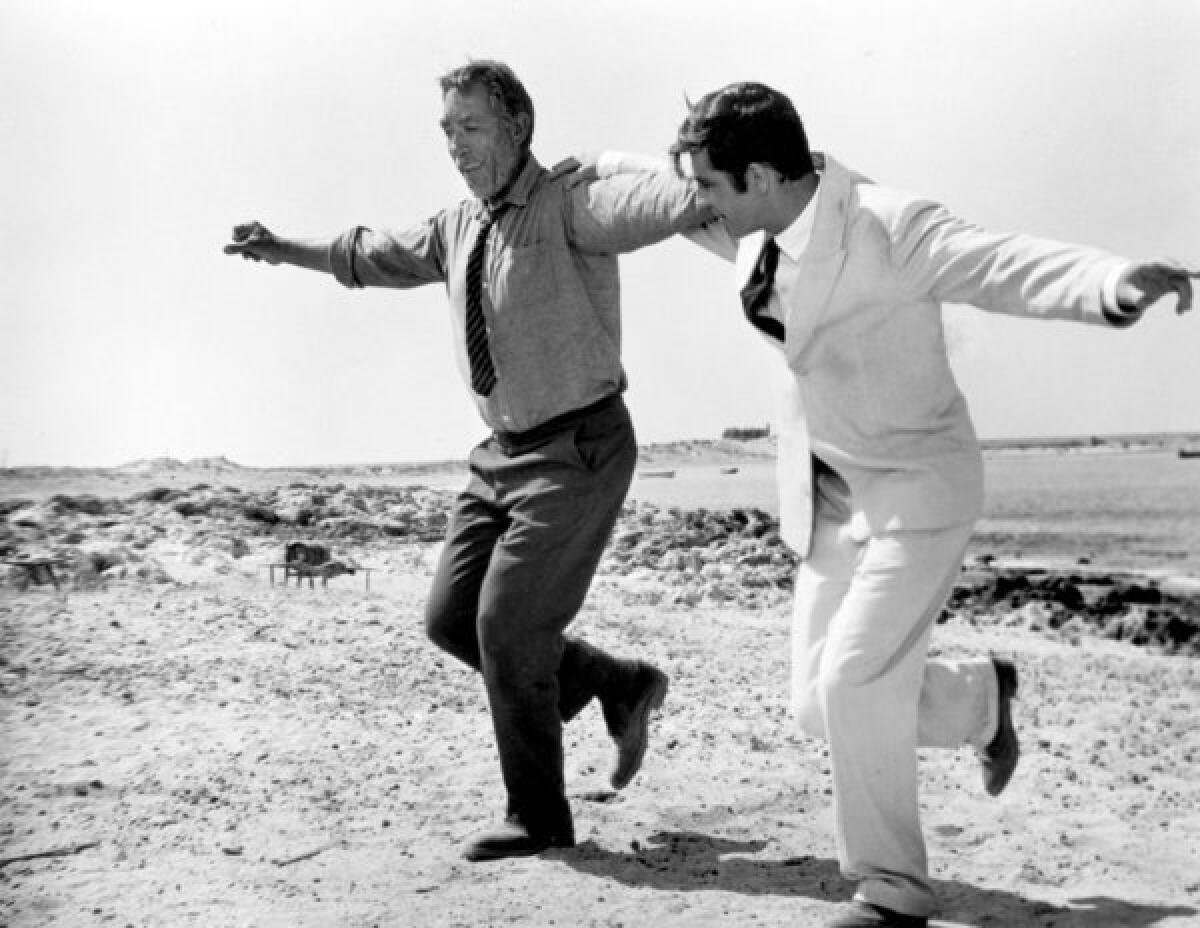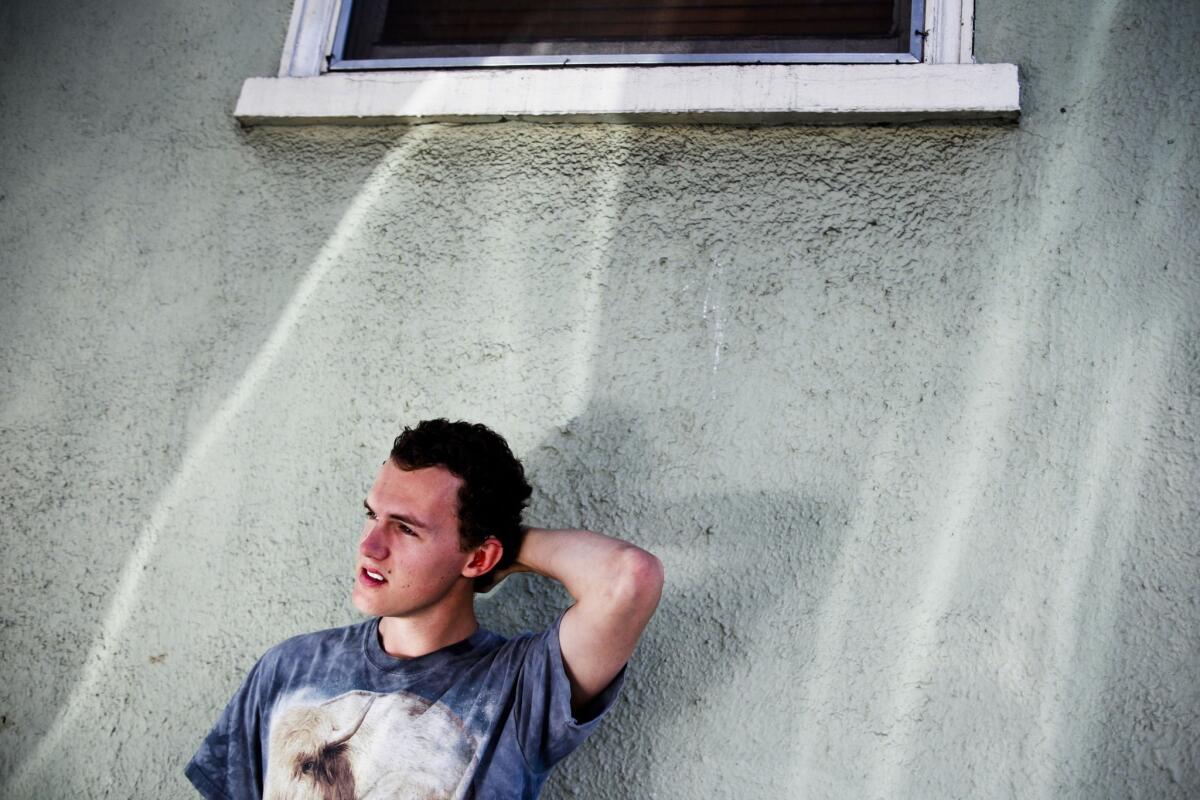From the Archives: From prison isolation to a sense of doom
A former prisoner in Pelican Bay’s isolation wing tells of fear and anxiety as he tries to refocus his life. But researchers disagree about the effects of prison isolation on those who endure it.
- Share via

He's the older guy in class. Old enough for you to notice. But he notices you, too, like he notices everyone else — your face, your gestures, where you sit, your race.
It's only after he's taken this unconscious roll-call that Steven Czifra turns his attention to Irish poet William Butler Yeats, yearning for the Lake Isle of Innisfree.
"And I shall have some peace there, for peace comes dropping slow…"
Czifra is 38. He has spent more time in prison than the typical undergraduate of English 45C has spent in school. He was in juvenile hall before many of his fellow students were born.
It's likely he's read more books than they have, savoring each word, terrified the pages would run out during the 22 1/2 hours a day he spent locked in a pen one-tenth the size of the lecture hall at UC Berkeley.
A little more than a decade ago, Czifra was dubbed "the worst of the worst," a moniker reserved for the 1,200 or so inmates isolated in the Security Housing Unit of Pelican Bay State Prison, a concrete and wire compound in the redwood forests near the Oregon border.
Today, he carries anxiety, fear and vigilance into the lecture halls of UC Berkeley.
"I was aware of everybody that was sitting around me and all of their facial features," Czifra said as he strolled off campus after class. "I know that nothing bad is going to happen … but I still feel like there is an imminent threat to my safety and security."
Even on a campus noted for its tolerance and tranquility, Czifra can't bridle a sense of doom: He will lose his scholarship, jeopardize his partner and their 5-year-old son, lapse from sobriety. Sometimes, his heart races and he is sure he's going to die. Right here. Right now.
I know that nothing bad is going to happen … but I still feel like there is an imminent threat to my safety and security."— Steven Czifra, former isolated prisoner
His short-term memory is weak. Those 12 lines of Yeats? Czifra had to read them over and over. James Joyce's "The Dead" will bog him down for days. On this particular day, he'll forget two appointments.
The fear, anxiety and memory loss are some of the symptoms commonly found among people kept in extreme isolation. They lie at the heart of a policy and scientific debate that was renewed this summer after prisoners statewide went on a hunger strike to protest conditions in high-security lockups. State legislators have begun to question whether a system primarily designed to isolate gang members is standing in the way of rehabilitation.
Czifra, who traveled to Sacramento last month to give his view from inside the isolation cells, called them torture chambers that left him "a fractured human being."
Yet Czifra is at peace with the past. He is amiable, voluble — a man making up for lost connection. On Center Street, he chats with a fellow student he knew from Folsom Lake College, where he earned good enough grades to get accepted last year to UC Berkeley. On Shattuck Avenue, he has a conversation about the environment and world economics with a buoyant Greenpeace recruiter.
"I have a gift," Czifra says. "I get to marvel at the ordinary."
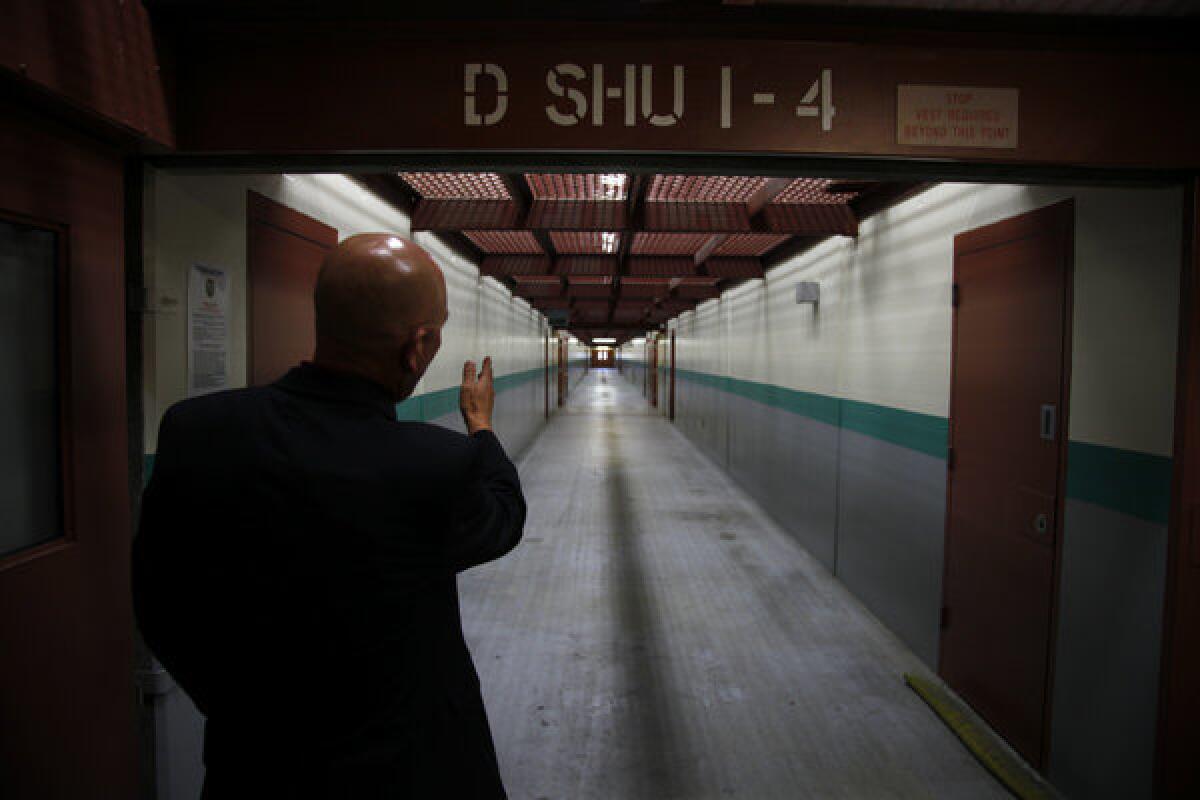
Pelican Bay State Prison public information officer Lt. Christopher Acosta guides a media tour of the Security Housing Unit, where about 1,200 inmates are held in isolation. More photos
Czifra had a complicated childhood, including a drug-addicted father who beat the left-handedness out of him. He had his first brush with the law at age 7, for burglarizing a garage. He smoked crack at age 10.
He soon graduated to carjacking. He wasn't very good at it. His life became a blur of juvenile hall, prison camps, group homes and, eventually, the adult state prison system. Four times, he was sentenced to isolation, serving a total of eight years at four institutions.
Czifra is sure some of his symptoms come from the corrosive, sometimes terrifying boredom of having no meaningful human contact during those years of isolation. Science appears to be on his side, though not unanimously.
Centuries of data show that prisoners, war detainees and hostages exhibit deep psychological problems in isolation, including anxiety, hypersensitivity, disturbed thoughts, impulsiveness, cognitive lapses, paranoia, psychosis and suicide.
Court testimony and published studies cite examples of prisoners with acute psychiatric symptoms that arose while they were isolated. But courts have consistently refused to declare that long-term physical isolation violates the constitutional prohibition against cruel and unusual punishment.
Much of the data on psychiatric symptoms among isolated prisoners came from small groups of inmates observed over short periods of time. Many studies didn't compare symptoms with a control group, or couldn't adequately account for preexisting conditions.
Kelli Klebe, a quantitative psychologist at the University of Colorado at Colorado Springs, believed science could do better. In 2007, Klebe began enrolling inmates from the Colorado Department of Corrections in a study she hoped would put the issue to rest. Researchers periodically tested and interviewed 262 inmates over a year, divided among those with or without a diagnosed mental illness, in isolation or in the prison system's general population.
Inmates dropped out or didn't complete the testing. Some appeared to pick answers randomly. Klebe applied professionally accepted statistical practices to try to adjust for those issues. Every run of the data suggested that people in isolation may have brought psychological problems with them.
Released by state prison officials in 2010, the study came under intense fire. Among other criticisms, researchers point out its high attrition rate, and that members of her control group had also been subjected to periods of isolation at some time.
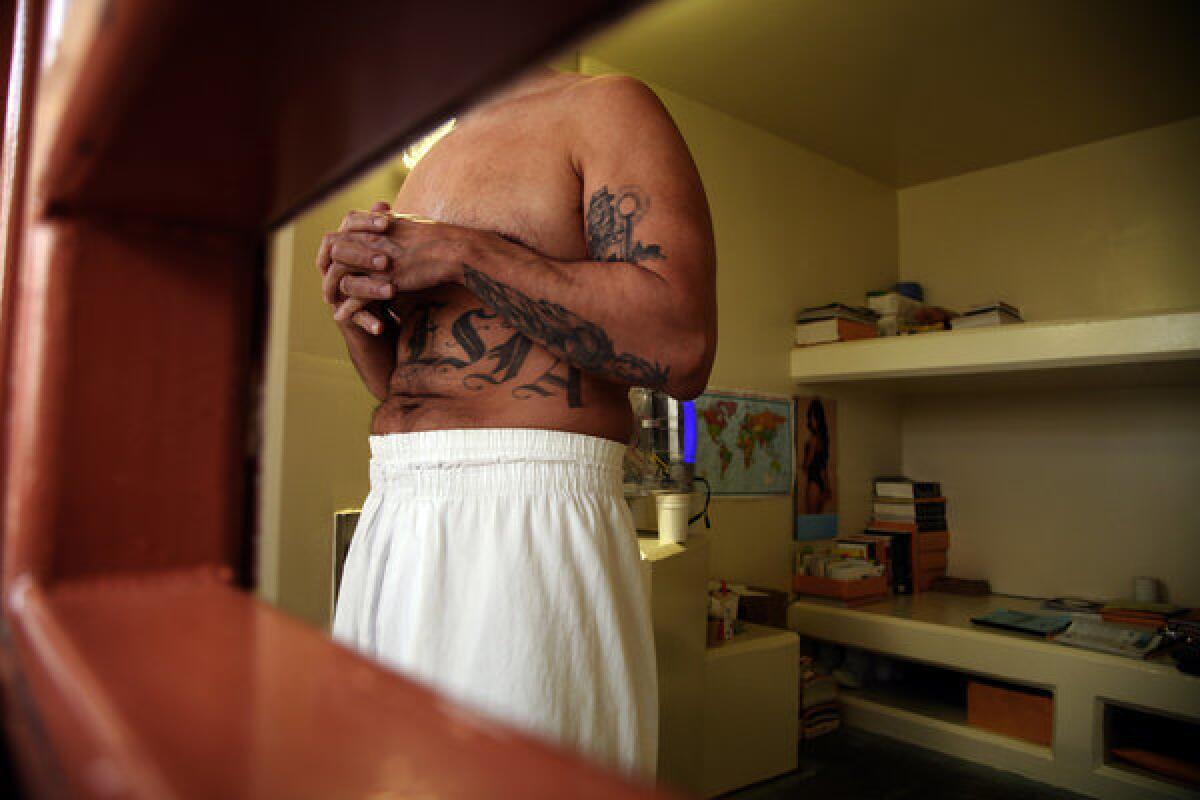
Inmate Daryl Baca stands in his Security Housing Unit cell at Pelican Bay State Prison. More photos
UC Santa Cruz psychologist Craig Haney, who has studied prison mental health for decades, said the Colorado study amounted to a good effort gone wrong. "I've read the study several times, and I've come to the conclusion that I can't come to a conclusion," he said. "I just think it created a lot of confusion in this area."
Colorado has since shifted away from isolation in its prisons, a change Klebe endorses. Now she must decide whether to comply with requests to testify on behalf of prison systems using her study to defend isolation.
"Do I want to testify on a side that I still don't personally agree with?" she asked. "The advice I've been given by other expert witnesses is you have to tell the story of your data, otherwise other people will make it up."
Czifra entered the isolation wing in Pelican Bay on Nov. 28, 2000, and occupied cell 10, in section C-2, a dun-colored pen, roughly 12 feet by 8 feet, lighted by a small fluorescent fixture above a stainless steel commode and sink combination.
Fewer than 100 of his fellow inmates got there the way he did — prison yard fights; more than 90% are there because of alleged gang affiliations, according to prison officials.
Stung by the hunger strike, and facing more hearings, state prison officials last month were eager to show the media the inside of Pelican Bay's isolation complex.
Each section has two floors with eight cells, their fronts covered by a metal grate, and some also with clear plastic panels that muffle prisoners' sporadic conversations. Inside, the air is stale and warm — most inmates spend the days in their underwear. Meals are delivered through a mailbox-sized hatch.
Inmates can have books and a television; a 13-inch flat panel set costs $182.90 in a prison supply catalog. It has no speakers, just headphone jacks, and its chassis is transparent, so guards can be sure that no contraband has been hidden there and that nothing has been taken out to make a weapon. Czifra had a small black-and-white TV.
He spent his time reading, drawing, tidying the cell, watching TV, working out. Every day, guards let him out for 90 minutes; he could walk down the corridor and speak with other prisoners. But like most, he was eager to get to the yard: a cistern-like room, roughly 26 feet by 8 feet, with 19-foot concrete walls rising to a patch of sky gridded by bars.
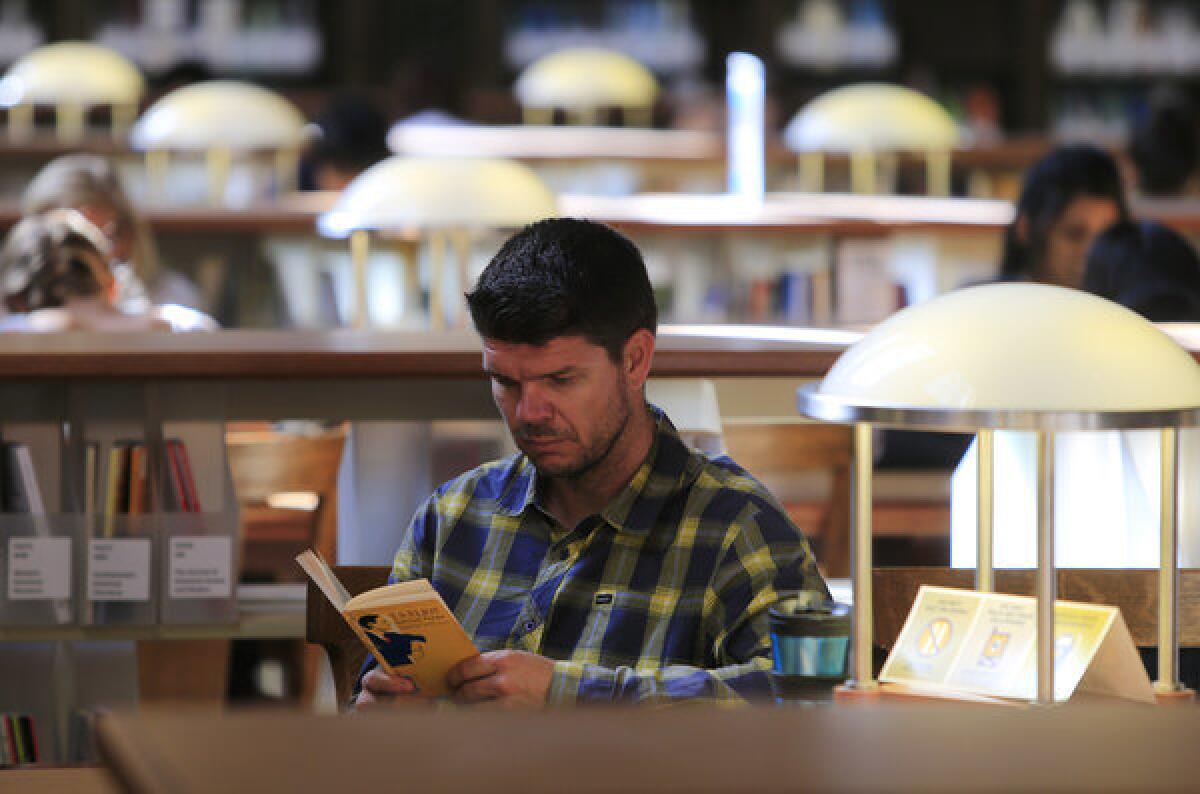
Steven Czifra studies in a UC Berkeley library. More photos
There, he would pace and turn until it made him dizzy or bored. The only view uncluttered by bars was a gap around the security camera. He counted himself lucky if he glimpsed a bird flying across it.
It was this way for nearly two years, until Czifra was transferred to the state prison in Sacramento, and eventually paroled. He served a few months for a parole violation, but by 2005, that life was over. He worked odd jobs — handyman, tree trimmer — and sometimes made good money. He entered a 12-step program, where he met Sylvia Guadalupe Garcia. They and their son live in a small, two-bedroom apartment just across the Berkeley border in Albany. He likes it neat; she leaves it cluttered.
Monday nights are reserved for an addiction support group. They drive their road-worn Honda Fit, and stop at a taco stand first. Czifra turns up the radio when a Carpenters song comes on. It reminds him of Christmas when he was a kid, he says. He has eclectic musical tastes: classic soul, rock oldies, '80s new wave — echoes from the dials of prison radio.
As they settle at a courtyard table, Garcia says she can't pinpoint what isolation did to Czifra. "All I really know is the after-effects and the healing," she says.
He needs to remember that he needs other people, she reminds him. Czifra listens. Then she recalls one more thing: When they first met, she says, "I couldn't touch him at all."
The crack in her voice comes as a surprise to both.
"We could hold hands," she adds, "but nothing else."
Follow Geoffrey Mohan (@LATsciguy) on Twitter
Follow @latgreatreads on Twitter
More great reads
Trick or treat for science: Kids become test subjects
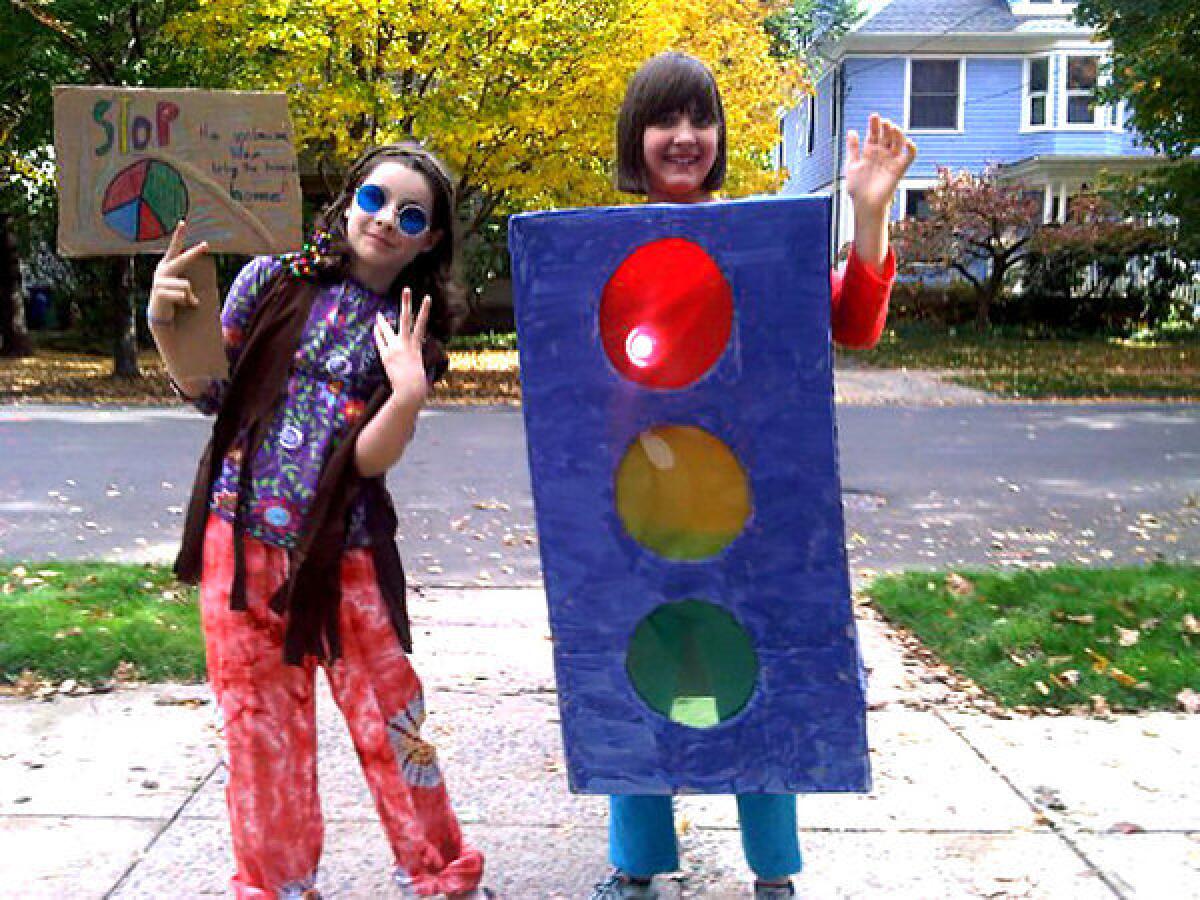
A lot of people come in ... and they trick-or-treat here and go back to where they came from."
